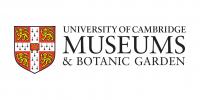People have used the flesh and shells of bivalves for thousands of years.

Numerous species of bivalves are exploited commercially for food. Larger clams are harvested for chowder. Oysters are considered a delicacy by many.
Pictured on the left are several species of found as part of seafood menus. Clockwise from the top left these are: cockles ( Cerastoderma edule ); razor shell ( Ensis sp.); edible mussels ( Mytilus edulis ); great scallop ( Pecten maximus ).

Several species of bivalve produce pearls, both natural and cultivated. A pearl is formed around any object that has been introduced either accidentally or deliberately beneath the mantle of the shell. Natural pearls are often irregularly spherical but cultivated ones can be made to assume more perfect shapes. The photograph on the right shows the shell of a pearl oyster ( Pinctada margaritifera ) with a pearl forming.
Pearls from British Pearl Mussels (Margaritifera margaritifera) have been incorporated into the Crown Jewels.

Some bivalves have mother-of-pearl interiors and these have been used to make buttons. The photograph of the right shows button blanks punched from the shell of a pearl oyster ( Pinctada margaritifera ).
Other shells have been used to engrave cameos.





